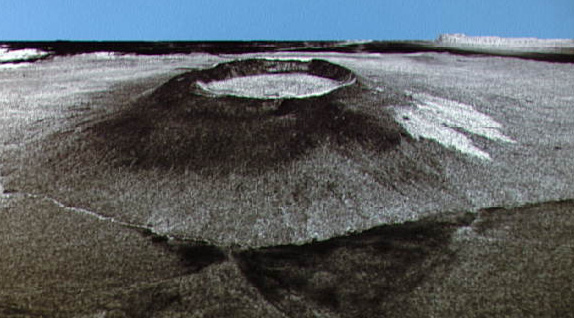|
Description of the Galapagos Islands Volcan Alcedo  | | Ryolite on Volcan Alcedo. Picture source: http://www.geo.cornell.edu/geology/GalapagosWWW/GalapagosGeology.html |
Volcan Alcedo is located in the center of Isabela, (also known as Albermarle Island) located between Volcan Darwin to the north and Sierra Negra to the south. The composition of its lavas differs from that of both its neighbors, indicating it has an independent magma plumbing system. It quite symmetrical and rises to an elevation of 1100 m (3650 feet). Relative to its size and height, Alcedo's caldera is large (7 to 8 km in diameter) and shallow (270 m deep). A steam vent, or fumerole, is located on the western side of the caldera. Only one historic eruption is known, a basaltic lava that erupted the southeast flank sometime between 1946 and 1960 (based on comparison of air photos). Volcan Alcedo is unusual in that its flanks are mantled by rhyolite pumice. Rhyolite is a light-colored volcanic rock that is produced by fractional crystalization. This occurs when basaltic magma intrudes into the crust and cools. As it does, it crystallizes, the crystals settling out. As a result, the composition of the magma steadily changes, becoming poorer in magnesium and iron and richer in silicon. The low iron content accounts for its light color compared to basalt. Alcedo is probably the oldest volcano on Isabela, and may be in the final phase of its evolution. This may account for its unusual lava chemistry and morphology.
|







